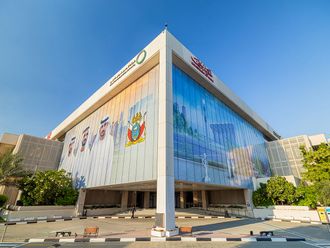Dubai: The US Fed may have raised the base rate, but it’s not by a margin to start hurting UAE’s mortgage takers. A 0.25 per cent increase is something they can take in their stride. And continue to do so as long as the US Federal Reserve keeps hiking its interest rate only by a few basis points with gaps of three to four months going forward.
“UAE mortgage rates are still stuck at a historical low … and it’s still quite a long way from the 7 per cent average that was there on home financing in 2007-08,” said Matt Green, Head of Research at the consultancy CBRE’s regional operations. “For those taking out a mortgage now, there are still deals with a favourable initial lock-in periods.
“Plus, property values have been stripped off a sizeable chunk of the premiums that had got added during 2013 to early 2014. Now, with values receding to more reasonable levels and still favourable mortgage rates, it’s a good time for non-cash buyers.”
Until the move by the US Fed to effect a hike in rates for the first time in a decade, home financing rates in the UAE were available for 2.99 to 4.49 per cent. “Mortgage rates are still holding at quite a competitive offering in contrast to the historical rates that we have witnessed in the past,” said Dhiren Gupta, Managing Director at 4C Mortgage Consultancy. “A fixed period rate offer is quite advisable in the current market dynamics.
“Banks have also been enticed to introduce new variants to the product so as to widen the range and create end users as they come with different pecuniary restraints.”
In the last two quarters, mortgage lending did pick up appreciably. It could be that banks were more than willing to enter into deals realising that a Fed rate hike was in the offing and that could distort end-user demand.
In fact, mortgage activity had had a good run through the year. A recent report by Global Capital Partners suggests that mortgages account for a larger portion in 2015 compared to their historical averages, moving away from the conventional norm of 3 out of 4 transactions being (cash) sales. “Mortgages are considered to be an indication of home-ownership, which highlights the shift of the market from an investor-based to an owner-occupied one. However, there (have been) instances where mortgage transactions (even) outweigh sales, especially in periods of a downturn.”
Good year for mortgages
Mortgage disbursal’s had one of its best years ever in the UAE. But it’s part of a trend that has shown steady year-on-year improvements since 2012.
“The number of mortgages have continued to trend upwards despite the price volatility,” states a report by Global Capital Partners. “Mortgage transactions have continued to gain momentum changing the norm of sale transactions accounting for 75 per cent of overall activity.”
Not surprisingly, properties bought in Dubai’s mid to high-end freehold clusters account for a fair share of the mortgage deals. “This is particularly true for communities associated with end user ownership such as the Greens and JLT,” the GCP report adds.
In the villa domain, mortgages now back 50 per cent of recent transactions in Dubai, based on the latest data. This is indicative of “stable demand for ready units,” according to the GCP report. “We opine that with an increasing amount of supply of newer villa communities, end-user ownership will spread to these areas. And given the higher propensity of mortgage, constitute investor- and end-user preference for communities as these options are delivered in the market.”
Revisiting rates
The 0.25 per cent hike in the US may not force UAE banks to immediately pass on the costs in their mortgage exposures. But there will soon come a tipping point and that lenders need to be aware of.
“We are [still] in the transformation phrase — the banks will feel an impact on their cost of borrowing funds after the hike in US Fed rates,” said Dhiren Gupta of 4C Mortgage Consultancy.
“A few local banks have started revising their rate index and in due course, we will be seeing greater repercussions on lending rates by almost all banks when the interbank borrowing rates rise further. In the past few weeks, we have seen a significant jump in the Emirates Inter Bank Offered Rate [Eibor], which is what banks here use to set their benchmark rate.
“But, still, it’s not to any astounding level ... and local home lenders do have to factor in a lot of elements in deciding the mortgage spread. The declining price of oil could be a significant factor, which might further dent the economy and place a further burden on [property] prices.”











